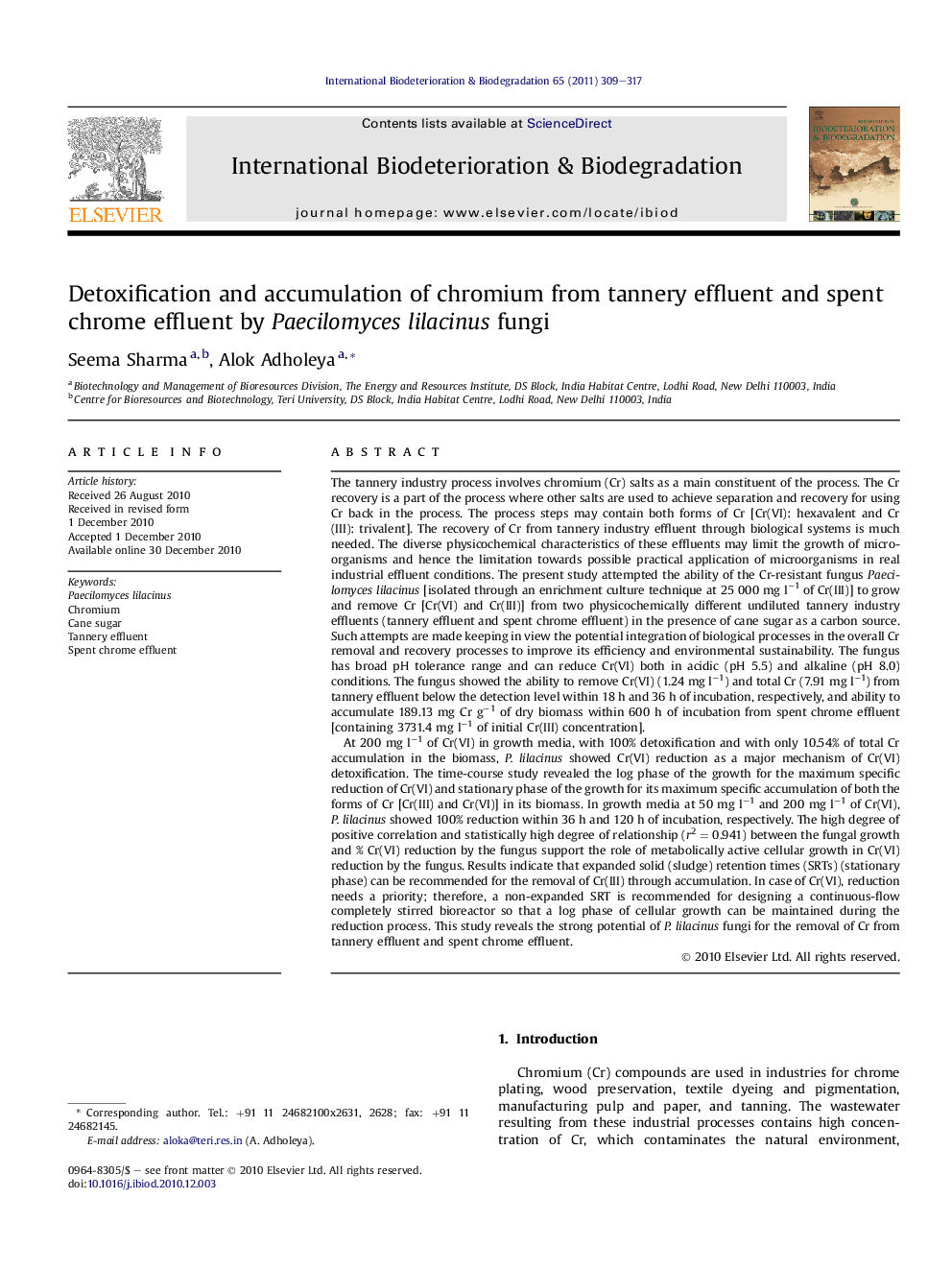| Article ID | Journal | Published Year | Pages | File Type |
|---|---|---|---|---|
| 6289530 | International Biodeterioration & Biodegradation | 2011 | 9 Pages |
Abstract
At 200 mg lâ1 of Cr(VI) in growth media, with 100% detoxification and with only 10.54% of total Cr accumulation in the biomass, P. lilacinus showed Cr(VI) reduction as a major mechanism of Cr(VI) detoxification. The time-course study revealed the log phase of the growth for the maximum specific reduction of Cr(VI) and stationary phase of the growth for its maximum specific accumulation of both the forms of Cr [Cr(III) and Cr(VI)] in its biomass. In growth media at 50 mg lâ1 and 200 mg lâ1 of Cr(VI), P. lilacinus showed 100% reduction within 36 h and 120 h of incubation, respectively. The high degree of positive correlation and statistically high degree of relationship (r2 = 0.941) between the fungal growth and % Cr(VI) reduction by the fungus support the role of metabolically active cellular growth in Cr(VI) reduction by the fungus. Results indicate that expanded solid (sludge) retention times (SRTs) (stationary phase) can be recommended for the removal of Cr(III) through accumulation. In case of Cr(VI), reduction needs a priority; therefore, a non-expanded SRT is recommended for designing a continuous-flow completely stirred bioreactor so that a log phase of cellular growth can be maintained during the reduction process. This study reveals the strong potential of P. lilacinus fungi for the removal of Cr from tannery effluent and spent chrome effluent.
Related Topics
Life Sciences
Environmental Science
Environmental Science (General)
Authors
Seema Sharma, Alok Adholeya,
